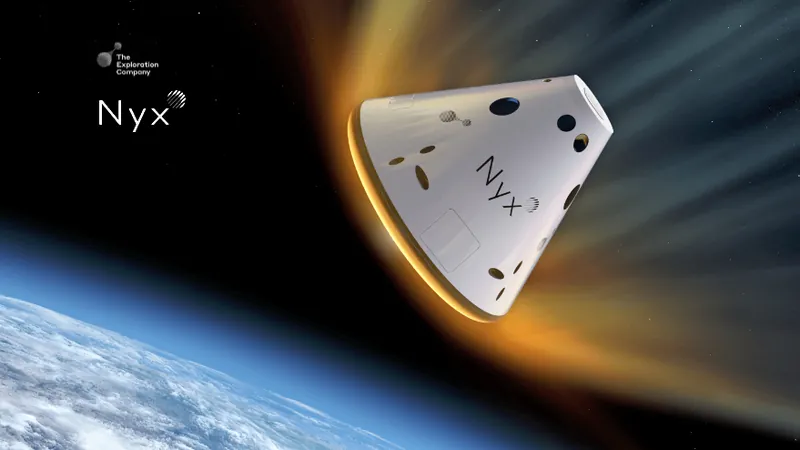
History Unfolds as India’s Maha Kumbh Mela Festival Starts After a 144-Year Wait
2025-01-13
Author: Chun
Introduction
In an unprecedented event that has not been witnessed for 144 years, the Maha Kumbh Mela festival officially commenced on Monday along the banks of the Ganges in Prayagraj, India. This massive gathering, recognized as the world’s largest religious festival, has drawn millions of Hindu devotees eager to participate in the revered pilgrimage.
Significance of the Festival
The Maha Kumbh Mela, revered as the “festival of festivals” in Hinduism, occurs every 12 years, but this year’s celebration is particularly momentous. The event is highlighted by a unique celestial alignment of the sun, moon, and Jupiter, making it an extraordinary occasion expected to attract over 400 million attendees—marking the largest turnout in the festival's long history.
Prayagraj: A Sacred Site
The sacred city of Prayagraj is a focal point for Hindus because it houses the Triveni Sangam, the divine confluence of the Ganges, Yamuna, and the mythical Saraswati rivers. During the 45-day event, participants indulge in multiple 'shahi san', or holy bathing days, where they bathe in the rivers, believing this act will purify their souls and ensure spiritual salvation.
Historical Context
Historically, the origins of the Kumbh Mela are linked to the legend of Samudra Manthan, where the elixir of immortality was believed to have spilled at four holy sites—Prayagraj, Haridwar, Ujjain, and Nashik—when Lord Vishnu churned the ocean. Among these, Prayagraj is considered the most significant, with its celebrations having an enduring historical and cultural prominence.
Akhara Participation and Rivalries
As preparations have unfolded, vibrant parades and processions have welcomed the arrival of the 13 akharas, which are ancient monastic sects of warrior sadhus from across India. Though traditionally fierce rivals, their participation enriches the atmosphere, although tensions between sects have sometimes led to violent confrontations over privileges during the bathing rituals.
Political Context and Spending
This year’s festival is poised not only to set records in attendance but also in spending, driven by the current political momentum under the governance of the Bharatiya Janata Party (BJP). Yogi Adityanath, the chief minister of Uttar Pradesh, has reportedly allocated over 70 billion rupees (around £670 million) for infrastructure improvements and sanitation initiatives essential for the safety of millions. Promotional materials featuring both Adityanath and Prime Minister Narendra Modi have been extensively circulated, highlighting the intertwining of religion and politics in India today.
Tensions Among Communities
However, the festival is also witnessing notable tensions. Reports have emerged about restrictions imposed on Muslim vendors, who have been reportedly barred for the first time from setting up stalls. Such divisions have raised concerns among religious leaders about communal harmony. Mahant Durganand Brahmachari, a senior priest at the festival, expressed his worry, urging the need for coexistence, emphasizing that 'hate should have no place,' and highlighting the risks of sowing religious discord.
Embracing Modern Technology
In contrast to centuries-old traditions, this year's gathering is embracing modern technology to enhance the experience of the attendees. Pilgrims will benefit from a Kumbh Mela mobile app designed to help navigate the sprawling 15-square mile (40-square kilometer) grounds, supported by an AI-powered chatbot capable of assisting in 11 languages via WhatsApp. To ensure the safety of the attendees, each person will receive a radio frequency wristband to facilitate tracking, supplemented by the deployment of drones for aerial surveillance and security monitoring. The spectacle will also include a breathtaking light show featuring over 2,000 drones, celebrating narratives from Hindu mythology.
Conclusion
As the Maha Kumbh Mela unfolds, it promises to be a landmark event that blends ancient tradition with modernity, while also reflecting the complex socio-political landscape of contemporary India. With millions of pilgrims and tourists converging, the festival stands as a powerful symbol of faith, culture, and unity amidst challenges.


 Brasil (PT)
Brasil (PT)
 Canada (EN)
Canada (EN)
 Chile (ES)
Chile (ES)
 Česko (CS)
Česko (CS)
 대한민국 (KO)
대한민국 (KO)
 España (ES)
España (ES)
 France (FR)
France (FR)
 Hong Kong (EN)
Hong Kong (EN)
 Italia (IT)
Italia (IT)
 日本 (JA)
日本 (JA)
 Magyarország (HU)
Magyarország (HU)
 Norge (NO)
Norge (NO)
 Polska (PL)
Polska (PL)
 Schweiz (DE)
Schweiz (DE)
 Singapore (EN)
Singapore (EN)
 Sverige (SV)
Sverige (SV)
 Suomi (FI)
Suomi (FI)
 Türkiye (TR)
Türkiye (TR)
 الإمارات العربية المتحدة (AR)
الإمارات العربية المتحدة (AR)